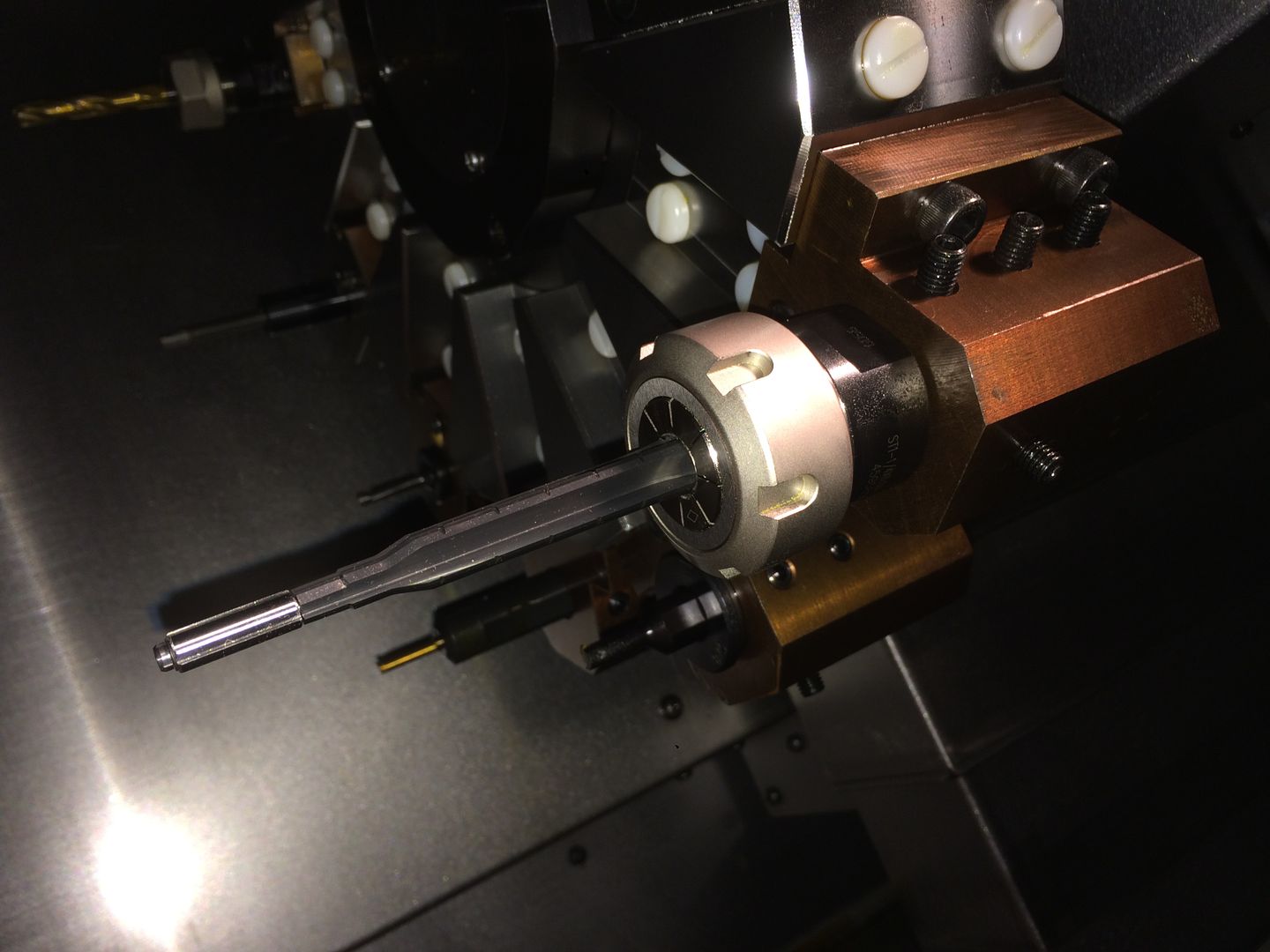Pete Wass
Well-known member
I have been mulling this subject for the past couple of weeks. I am left with the following thought. When we go to all the work of dialing in a barrel to .000" we then use a disjointed device to ream a straight hole. How can that make sense? There has to be enough running clearance for the pilot bushing to rotate plus, with a ball in the back end pushing, shouldn't the running clearance be projected back to the rear of the reamer and magnified by it's length?
That said, for those who don't bore first, Why go to all the work of indicating the barrel bore in to .000? Why wouldn't, say two or three tenths be ok? If we have potential error and, from my experience, errors compound, it wouldn't seem to me that the bore would be terribly critical, within limits, of course. I realize in practical practice, things all works out in the end or we have to live with what we end up with, at least.
It's just nagging to me that we start with a dead nuts hole then use tools with slop in them.
Has anyone tried the reamer holders that are used on Screw machines and production Lathes?
Pete
That said, for those who don't bore first, Why go to all the work of indicating the barrel bore in to .000? Why wouldn't, say two or three tenths be ok? If we have potential error and, from my experience, errors compound, it wouldn't seem to me that the bore would be terribly critical, within limits, of course. I realize in practical practice, things all works out in the end or we have to live with what we end up with, at least.
It's just nagging to me that we start with a dead nuts hole then use tools with slop in them.
Has anyone tried the reamer holders that are used on Screw machines and production Lathes?
Pete


